 |
 |
Fauna of MurciaMammalsThis ecoregion, located on the southeastern coast of Spain, is characterized by a warm and dry climate with volcanic rock forming portions of the coast. Although there is an almost complete absence of tree species, the endemism rate of the vegetation, at about forty-two percent, is extremely high. Murcia and Camposol - Mazarron are a wonderfully rich region in terms of wildlife and is home to a vast array of indigenous animals. We can observe in Mazarron, Region of Murcia many species of terrestrial and marine mammals. Terrestrial mammals : Red squirrel, Eurasian red squirrel (Sciurus vulgaris - Fam. Sciuridés) Red squirrel, Eurasian red squirrel (Sciurus vulgaris - Fam. Sciuridés) Barbary Sheep, Aoudad, Arui, Waddan (Ammotragus lervia - Fam.Bovidae) Beech Marten, Stone Marten (Martes foina - Fam. Mustelides) Wildcat, Wild Cat, Wild-cat (Felis silvestris - Fam. Felidae) Wild boar (Sus scrofa. - Fam. Suidae) Garden dormouse (Eliomys quercinus - Fam. Myoxidae)  European otter, eurasian otter, eurasian river otter, common otter and old world otter European otter, eurasian otter, eurasian river otter, common otter and old world otter(Lutra lutra - Fam. Mustélidos) European badger, eurasian badger (Meles meles - Fam. Mustélidos) Cabrera vole (Microtus cabrerae - Fam. Muridae) Iberian lynx, spanish lynx (Lynx pardinus)  Least Weasel (Mustela nivalis - Fam. Mustelides) Least Weasel (Mustela nivalis - Fam. Mustelides) Red fox (Vulpes vulpes - Fam. Canidae) European rabbit (Oryctolagus cuniculus) European brown hare (Lepus europaeus, Liebre europea. Lepus timidus) Iberian lynx, spanish lynx (Lynx pardinus) 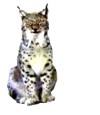 The Iberian lynx seems to be very rare in Murcia : few visits in Sierra del Puerto (North of Murcia). The spanish lynx is distributed mainly in the southwest quadrant of Spain. Murcia has indicated its presence from footprints and observations that have not been repeated in time, so it must be regarded as extinct. The Iberian lynx seems to be very rare in Murcia : few visits in Sierra del Puerto (North of Murcia). The spanish lynx is distributed mainly in the southwest quadrant of Spain. Murcia has indicated its presence from footprints and observations that have not been repeated in time, so it must be regarded as extinct. It is worth remember that as late as the early 1960s there were still between 5,000 and 6,000 iberian lynxes in the Peninsula. Detect presence of the Iberian lynx is very difficult mostly due to its solitary behaviour, nocturnal or crepuscular habits, low density of its populations. The Iberian Lynx is an example of wildlife in Spain that is indigenous and only to be found in Spain. The Iberian Lynx today is only one of many species of wildlife in Spain that is facing extinction. For this reason, decreasing numbers of this animal in Spain has led to its status as a protected form of wildlife. The main reason for the regression of the lynx in the Iberian Peninsula is without any doubt the loss of its natural habitat. Intensive forestry has caused large areas of natural vegetation to be replaced by pine and eucalyptus monocultures, making it impossible for the lynx to survive. Other factors, such as public building works or land clearing operations seem to have had less impact, although in some cases they have caused lynx populations to be broken up and isolated. The Iberian lynx has been brought to the brink of extinction because of a combination of threats that include the radical decrease of rabbits, the lynx's principal prey; a serious reduction in habitat; being caught in snares set for rabbits; accidental deaths caused by speeding vehicles on the expanding road network, and illegal hunting. Duringt this year 2008, a total of 82 Iberian lynx were born, including 21 in captivity, and including cubs there now may be as many as 200 lynxes in Spain, up from 100 in 2002. In addition, more than 50 lynxes are doing their bit in the various captive breeding centres. A record 13 cubs born in captivity have survived this year. There is, however, still a very, very long way to go. Bats :Kuhl's Pipistrelle (Pipistrellus kuhlii - Fam. Vespertilionidae)Large bentwing bat (Miniopterus schreibersii - Fam. Vespertilionidae) Common pipistrelle (Pipistrellus pipistrellus - Fam. Vespertilionidae) Nathusius's pipistrelle (Pipistrellus nathusii - Fam. Vespertilionidae) Greater horseshoe bat (Rhinolophus ferrumequinum - Fam. Rhinolophidae) Sérotinus (Eptesicus isabellinus - Fam. Vespertilionidae) Mehely's horseshoe bat (Rhinolophus mehelyi - Fam. Rhinolophidae) Mediterranean horseshoe bat (Rhinolophus euryales - Fam. Rhinolophidae) Hypsugo savvi's bat (Hipsugo savii - Fam. Vespertilionidae) Lesser horseshoe bat (Rhinolophus hipposideros - Fam. Rhinolophidae) European free-tailed bat (Tadarida teniotis - Fam. Molossidae) Greater mouse-eared bat (Myotis myotis - Fam. Vespertilionidae) Myotis escalerai (Myotis escalerai - Fam. Vespertilionidae) Lesser Mouse-Eared Bat (Myotis blythii - Fam. Vespertilionidae) Geoffroy's bat (Myotis emarginata - Fam. Verpertilionidae) Daubenton's bat (Myotis daubentonii - Fam. Verpertilionidae) Long-fingered bat (Myotis capaccinii - Fam. Vespertilionidae) Grey long-eared bat (Plecotus austriacus - Fam. Verpertilionidae) Vesper or Evening Bats (Nyctalus sp. - Fam. Vespertilionidae), etc ... Marine mammals :Very little is known about the critical habitat requirements of marine mammals. The lack of knowledge about distribution, reproductive cycles, migratory habits, ecological roles and so on limits the ability to develop conservation strategies. This makes marine mammals vulnerable to increased disturbance and habitat degradation.The physiography of the region is also of great interest, as the distribution of many cetaceans appears to be mainly affected by the depth, slope or nature of the sea floor. Dolphin (Fam. Delphinidae) :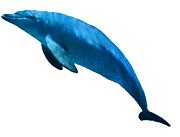 Bottlenose Dolphin (Tursiops truncatus) Striped Dolphin (Stenella coeruleoalba) Risso's Dolphin (Grampus griseus) Common dolphin, Delfín común, saddle-backed dolphin, short-beaked common dolphin, short-beaked saddle-backed dolphin, short-beaked saddleback dolphin (Delphinus delphis Linnaeus) The common dolphin, as well as other cetaceans in the Mediterranean Sea, is a useful bio-indicator for an ecosystem facing several pressures, such as mechanical destruction of the coastline, over-exploitation of resources, debris pollution, toxic pollution, and noise pollution. The effect of these threats in the Mediterranean is greatly increased by the semi-enclosed nature of this sea. The only renewal of water for the Mediterranean comes from the Atlantic Ocean through the narrow Strait of Gibraltar. Frequently observed in the coastal region of Murcia :Fin Whale, Finback Whale, Razorback, Common Rorqual (Balaenoptera physalus - Fam.Balaenopteridae)Marine mammal belonging to the suborder of baleen whales. It is the second largest whale and the second largest living animal after the Blue Whale, growing to nearly 27 meters (88 ft) long.  Sperm Whale (Physeter macrocephalus Fam. Physeteridae) Sperm Whale (Physeter macrocephalus Fam. Physeteridae)The largest of all toothed whales and largest living toothed animal. A bull Sperm Whale can grow up to 20.5 metres (67 ft) long. The Sperm Whale is among the most cosmopolitan species in the world, as it is relatively abundant from polar waters to the equator and is found in all the oceans and the Mediterranean Sea. The best time to see them is in summer, when the sea is rich in plankton, which attracts fish and whales. Less frequently observed in the coastal region of Murcia :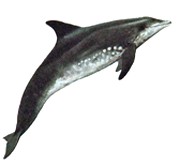 Rough-toothed dolphin (Steno bredanensis) False Killer Whale (Pseudorca crassidens - Fam. Delphinidés) Dwarf sperm whale (Kogia simus) Pygmy sperm whale (Kogia breviceps) 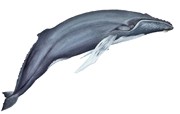 Humpback whale (Megaptera novaeangliae) Common minke whale or northern minke whale (Balaenoptera acutorostrata) BirdsBirdlife is exceptional in this area. Murcia is a fantastic place to go bird watching because the diverse terrains and climates within its borders ensure a great variety of birds can be spotted while bird watching. Spain is believed to be home to different species of birds of prey many of which are rare and highly prized by bird watching enthusiasts. A significant proportion of these bird species are indigenous to Spain while others migrate to and from Spain on a yearly basis. A walk in the countryside seems to be filled with the endless chorus of birdsong.  Golden eagle (Aguila chrysaetos - Fam. Accipitridae) Golden eagle (Aguila chrysaetos - Fam. Accipitridae) Collared Pratincole or common pratincole (Glareola pratincola - Fam.Glareolidae) Goldfinch or european goldfinch (Carduelis carduelis - Fam.Fringillidae) European robin (Erithacus rubecula - Fam.Turdidae) European serin, or just serin (Serinus serinus - Fam. Fringillidae) Bonelli's eagle (Hieraaetus fasciatus - Fam. Accipitridae) Stone curlew or eurasian stone-curlew (Burhinus oedicnemus - Fam. Burhinidae) Great bustard (Otis tarda - Fam. Otididae) European eagle owl (Bubo bubo - Fam. Strigidae) 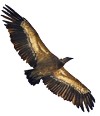 Griffon vulture, or eurasian griffon vulture (Gyps fulvus - Fam. Accipitridae) Griffon vulture, or eurasian griffon vulture (Gyps fulvus - Fam. Accipitridae) Great tit (Parus major - Fam. Paridae) Kentish plover (Charadrius alexandrinus - Fam. Charadriidae) Marbled duck, or marbled teal (Marmaronetta angustirostris - Fam. Anatidae) Common kestrel (Falco tinnunculus - Fam. Falconidae) Lesser Kestrel (Falco naumanni - Fam. Falconidae) Black-winged stilt (Himantopus himantopus - Fam. Recurvirostridae) Male european black redstart (Phoenicurus ochruros - Fam. Turdidae) Sardinian warbler (Sylvia melanocephala) - Fam. Sylviidae) Common raven (Corvus corax - Fam. Corvidae) 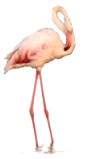 Greater flamingo, caribbean flamingo, american flamingo Greater flamingo, caribbean flamingo, american flamingo (Phoenicopterus ruber - Fam. Phoenicopteridae) White-throated dipper (Cinclus cinclus - Fam. Cinclidae) Common crossbill (Loxia curvirostra - Fam. Fringillidae) Audouin's gull (Larus audouinii - Fam. Laridae) White wagtail (Motacilla alba. Fam. Motacillidae) Peregrine falcon (Falco peregrinus - Fam. Falconidae) Grey heron (Ardea cinerea - Fam. Ardeidae) White-headed duck (Oxyura leucocephala - Fam. Anatidae) Blackbird, common blackbird or eurasian blackbird (Turdus merula - Fam. Turdidae) Long-tailed tit (Aegithalos caudatus - Fam. Aegithalidae) Little owl (Athene noctua - Fam. Strigidae) Common buzzard (Buteo buteo - Fam. Accipitridae) European storm-petrel or storm petrel (Hydrobates pelagicus - Fam. Hydrobatidae) 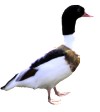 Common shelduck (Tadorna tadorna - Fam. Anatidae) Common shelduck (Tadorna tadorna - Fam. Anatidae) Cory's shearwater (Calonectris diomedea - Fam. Podicipedidae) Little grebe (Tachybaptus ruficollis - Fam. Somormujos), ... AmphibiansIn the Region of Murcia, there are the presence of one species of urodela (Salamandra salamander) and eight species of anurans. Most of them are widely represented in the Northwest Region of Murcia.  Iberian ribbed newt, spanish ribbed newt (Pleurodeles waltl - Fam. Salamandridae) Perez's frog or rana común (Rana perezi - Fam. Ranidae)  Mediterranean tree frog, stripeless tree frog (Hyla meridionalis - Fam. Hylidae) Mediterranean tree frog, stripeless tree frog (Hyla meridionalis - Fam. Hylidae) Common parsley frog (Pelodytes punctatus - Fam. Pelobatidae) Spanish painted frog, sapillo pintojo meridional (Discoglossus jeanneae - Fam. Discoglossidae)  Fire salamander (Salamandra salamandra - Fam. Salamandridae) Fire salamander (Salamandra salamandra - Fam. Salamandridae) Common toad, european toad (Bufo bufo - Fam. Bufonidae) Natterjack toad (Bufo calamita - Fam. Bufonidae)  Western spadefoot toad (Pelobates cultripes - Fam. Pelobatidae) Western spadefoot toad (Pelobates cultripes - Fam. Pelobatidae) Crapaud Sapo Partero (Bético Alytes dickhilleni - Fam. Discoglossidae) ReptilesWe can observe a total of 21 species of reptiles, belonging to 9 families, enriching the fauna of the region of Murcia. None of the species in Murcia is dangerous for humans, with the exception of the viper. 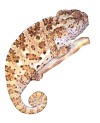 Common chameleon (Chamaeleo chamaeleon - Fam. Chamaeleonidae) Common chameleon (Chamaeleo chamaeleon - Fam. Chamaeleonidae) Montpellier snake (Malpolon monspessulanus - Fam. Colubridae) European grass snake, ringed snake (Natrix natrix - Fam. Colubridae) False smooth snake (Macroprotodon brevis - Fam. Colubridae) Ladder snake (Elaphe scalaris - Fam. Colubridae) Horseshoe snake (Coluber hippocrepis - Fam. Colubridae) Southern smooth snake (Coronella girondica - Fam. Colubridae)  Snub nosed viper (Vipera latasti - Fam. Viperidae) Snub nosed viper (Vipera latasti - Fam. Viperidae) Viperine Snake (Natrix maura - Fam. Colubridae) Iberian worm lizard (Blanus cinereus - Fam. Amphisbaenidae) Bedriaga's skink (Chalcides bedriagai - Fam. Scincidae) Mediterranean pond turtle (Mauremys leprosa - Fam. Emydidae) Spanish psammodromus (Psammodromus hispanicus - Fam. Amilia Lacertidae) 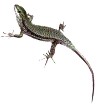 Iberian wall lizard (Podarcis hispanica - Fam. Lacertidae) Iberian wall lizard (Podarcis hispanica - Fam. Lacertidae) Large psammodromus (Psammodromus algirus - Fam. Lacertidae) Red-tailed spiny-footed lizard (Acanthodactylus erythrurus - Fam. Lacertidae) Timon lepidus, ocellated lizard (Lacerta lepida - Fam. Lacertidae) The moorish gecko, salamanquesa , crocodile gecko , european common gecko , maurita naca gecko (Tarentola mauritanica - Fam. Gekkonidae) Mediterranean house gecko (Hemidactylus turcicus - Fam. Gekkonidae)  Greek tortoise (Testudo graeca - Fam. Testudinidae) Greek tortoise (Testudo graeca - Fam. Testudinidae) Loggerhead sea turtle (Caretta caretta - Fam. Cheloniidae), ... etc ... Pisces Common seahorse (Hippocampus ramulosus) Common seahorse (Hippocampus ramulosus) Atlantic mackerel (Scomber scombrus) Long-finned pilot whale (Globicephala melas) Sea bream (Sparus auratus) Spanish toothcarp (Lebias ibera)  Atlantic horse mackerel (Trachurus trachurus) Atlantic horse mackerel (Trachurus trachurus) Greater amberjack (Seriola dumerili) Dusky perch (Epinephelus guaza) Striped mullet (Mugil cephalus)  Striped seabream (Lithognathus mormyrus) Striped seabream (Lithognathus mormyrus) Swallowtail seaperch (Anthias anthias) Cardinal fish (Apogón imberbis) Fork-tailed threadfin bream (Phycis phycis) Comber (Serranus Cabrilla)  Bigscale Scorpionfish, Large-Scaled Scorpion Fish, Largescaled Scorpionfish, Orange Scorpionfish, Red Scorpion-Fish, Red Scorpionfish, Scorpionfish, Whiskery Scorpionfish Bigscale Scorpionfish, Large-Scaled Scorpion Fish, Largescaled Scorpionfish, Orange Scorpionfish, Red Scorpion-Fish, Red Scorpionfish, Scorpionfish, Whiskery Scorpionfish(Acorpaena Scrofa - Scorpaena scrofa) Black seabream (Spondyliosoma cantharus) Gilt-head (sea) bream (Sparus aurata) Brown wrasse (Labrus Merula)  Striped red mullet (Mullus surmuletus) Striped red mullet (Mullus surmuletus) Zebra seabream (Diplodus cervinus) Sar commun, sar, sargue, mouré punchu, sargou, saragou, mouchon, White Seabream (Diplodus sargus) Northern bluefin tuna, or giant bluefin tuna (Thunnus thynnus) : Japan's insatiable appetite for sushi has spawned a booming business of tuna-fattening throughout the Mediterranean that is pushing the mighty Atlantic bluefin tuna to the brink of extinction, conservationists have warned. Spain leads this maritime bonanza, with the biggest tuna-fattening operation in the world off the south-east coast near Murcia, but Italy, France, Greece, Turkey, Libya, Morocco and Tunisia are joining in. They are overfishing the bluefin tuna. Stocks have fallen 20 per cent in the last five years. They don't breed and rear fish in captivity, they pen up declining stocks of wild fish that migrate to the Mediterranean every summer. Beyond the obvious problems related to the sustainable management of the wild stock, as reported above, current tuna farming practices in the Mediterranean entail a much more subtle though potentially very important environmental risk. During their captive period, which lasts for about 6 months, farmed tuna are fed on an exclusive basis large quantities of whole bait fish (small and medium pelagic species). Most of it consists of imported frozen, untreated fish, from outside the Mediterranean region, often belonging to small pelagic species alien to the Mediterranean though closely related to the local clupeiform ones (which are mainly sardine Sardina pilchardus, anchovy Engraulis encrasicolus and round sardinella Sardinella aurita). The systematic dumping into the Mediterranean marine ecosystems of thousands of tonnes of exotic whole fish constitutes a first order environmental threat due to the significant risk of spreading new diseases to the native fish populations. The subsequent threat to local purse seine fishing fleets targeting small pelagic fish is also obvious, as well as to the wider marine ecosystems, where small pelagic populations play a key functional role. InsectsSpiders :Many different kinds of spiders live around homes and buildings. Most are harmless and in fact are beneficial, because they prey upon flies, crickets and other nuisance insects.In Murcia, Gnaphosidae family is the most represented. It is followed in importance by Linyphiidae, Theridiidae, Salticidae and Lycosidae. As against, there are families like Eresidae, Filistatidae or Scytodidae Hersiliidae, have a low representation of species. However, the presence of certain species such as Stegodyphus lineatus, Filistata isidiatrix, Loxosceles rufescens Hersiliola or SSP, are represented in abundance in all places. There are more than 1,700 species of spider in Spain but only three are in way harmful to us. European or Mediterranean black widow, malmignatte spider, karakurt (Latrodectus Tredecimguttatus - Fam. Theridiidae). By far, the most dangerous is the black widow (Latrodectus tredecimguttatus) which gives a medically-complex and painful bite though it is not fatal. Tarantula wolf spider (Lycosa tarantula - famille des araignées-loups Lycosidae). These spiders are rather large, the females being around 27 mm (1 in.) in body length and the males around 19 mm (0.75 in.). A wolf spider from the area around a city in Italy now called Taranto (but called Tarentum in Roman times). The venom of the Lycosidae is not particularly toxic to human beings, and is no more painful than the sting of a bee. Brown recluse spider (Loxosceles reclusa) Originally from the United States. In United States the brown recluse is potentially dangerous. Although bites are rare, the venom can cause serious wounds and infestations should be taken seriously. Other Loxosceles can be found in Europe Loxosceles rufescens. Its bite is not regarded as being as severe as some of the other spiders of this genus. In Murcia, Loxosceles rufescens cause a local swelling and a slight necrosis. Funnel-web tarantulas Spider - family Hexathelidae Australian funnel-web spiders are very venomous spiders of the family Hexathelidae. These spiders are found in two genera of the family : Hadronyche (which is not associated with any known human fatalities) and Atrax (which probably have killed 13 people). They are notorious for the inclusion of the Sydney funnel-web spider (Atrax robustus), native to eastern Australia. There are other genera in family Hexathelidae, but these do not have the notorious reputation of the Australasian funnel-webs. These spiders are medium-to-large in size, with body lengths ranging from 1 cm to 5 cm (0.4" to 2"). Funnel-webs are one of the three most dangerous spiders in the world and are regarded by some to be the most dangerous. The european Funnel-web tarantulas Spider, although not deadly to humans, is painful and sometimes dangerous for vulnerable individuals. Macrothele calpeiana (Walckenaer, 1805) type species of the genus and the largest European spider, whose distribution extends across the south-eastern Iberian Peninsula, and in two localities of North Africa. Macrothele calpeiana is the only spider protected under European legislation.  They are jetblack with a glossy carapace and fine hairs on their legs and abdomen. The 1.5cm long spinnerets, at the rear, almost look like extra legs. The body can be up to 3.5cm long and the stretched legs can reach a span of 8cm. When under threat it can raise up its front legs into an attack position, exposing its fangs. They are jetblack with a glossy carapace and fine hairs on their legs and abdomen. The 1.5cm long spinnerets, at the rear, almost look like extra legs. The body can be up to 3.5cm long and the stretched legs can reach a span of 8cm. When under threat it can raise up its front legs into an attack position, exposing its fangs. Knowledge of areas of distribution of the species showed that many of their populations are probably growing. The species has been found in recent years in many places where previously it had not been registered, as in the region of Murcia. His bite is deemed dangerous. This is undoubtedly a tarantulas Europe's most toxic with specimens Greek Gender Cyrtocarenum (Ctenizidae). Scorpions :As a rule the larger the Scorpion the less venomous it is, plus the European species are usually less venomous than there neighbors in other parts of the World.Euscorpius flavicaudis (Fam. Euscorpiidae) It is found in different habitats : in gardens, under stones, in houses, in old walls. This species is a small black scorpion with yellow-brown legs and sting (telson). Adults measure 35-45 mm. Mildly venomous. Harmless scorpion, which rarely will use its stinger. Euscorpius carpathicus (Fam. Chactidae) It is found in different habitats : in gardens, in forrests, under stones, in houses, in old walls. This species varies very much in color. Some populations are black with yellow-brown legs and darker sting (telson). Others have dark brown bodies. Some populations are also light brown, almost orangish in color. Because of these variations, colors are not a safe way to identify Euscorpius. Adults measure 35-45 mm. It is a typical fossorial scorpion with large, strong pedipalps, a stout body, short legs and a short, thin tail. Mildly venomous. Harmless scorpion, which rarely will use its stinger. It can be dangerous in children. Belisarius xambeui This is a troglophilic species which lives in quite high altitudes (650-1500 m). Its is seldom found deep into caves, but rather occupy cave entrances. It can also be found under stones etc., and in connection with abandoned man-made structures like collapsed chimneys, cellars and castle ruins. Belisarius xambeui is a small blind scorpion. This species is 3-4 cm long, and has a pale yellow color (almost translucent). Harmless. Buthus occitanus, common european scorpion, mediterranean scorpion (Fam. Buthidae)  Buthus Occitanus is a species of scorpion in the Buthidae family. It is one of the most venemous scorpions in the world. It originated in Africa, but in Europe there is a brown morph that is less venemous than the yellow morph from Africa. The brown morph of this species is one of the most poisonous species in the world. Buthus Occitanus is usually a orangish and yellow color. This species is 7-8 cm long. Buthus Occitanus is a species of scorpion in the Buthidae family. It is one of the most venemous scorpions in the world. It originated in Africa, but in Europe there is a brown morph that is less venemous than the yellow morph from Africa. The brown morph of this species is one of the most poisonous species in the world. Buthus Occitanus is usually a orangish and yellow color. This species is 7-8 cm long. How often certain symptoms were caused by these stings is tabulated, with localised pain, breaking of the skin, and oedema being the main symptoms, respectively. False scorpions, book scorpion :False scorpion is an arachnid belonging to the order Pseudoscorpionida, also known as Pseudoscorpiones or Chelonethida. Pseudoscorpions are generally beneficial to humans since they prey on clothes moth larvae, carpet beetle larvae, booklice, ants, mites, and small flies. They are small and inoffensive, and are rarely seen due to their size.Neobisium sp Water scorpion (Nepa cinerea = rubra), (hétéroptère Nepidae), needle bugs or water stick insects (25 mm). Panorpa communis. They have a wingspan of approximately 35mms. Scorpion flies belong to an ancient group of insects known as 'mecopterans' which can be traced back more than 250 million years. It is believed that butterflies and many other species of insect evolved from their ancestors. The name scorpionfly comes from the shape of the males tail, resembling that of a scorpion. Despite the appearance, they are perfectly harmless, and don't sting. Centipedes :Megarian Banded Centipede (Scolopendra cingulata) (Myriapodes chilopodes)Scolopendra cingulata, however, is one of the smallest members of this clade at approximately 10-15 cm. The venom of S. cingulata is less toxic than the other scolopendrid centipedes, but they are still regarded as fast and aggressive. The main symptoms shown after the bite were erythema and edema. Scolopendra morsitans linné (Myriapodes chilopodes) (10-20 cm) The bites cause intense local pain, vomiting, headaches and inflammation around extent of the injury. Common house centipede (Scutigera coleoptrata, Linnaeus 1758) House centipedes (Scutigera) are common arthropods with long, flattened, segmented bodies with one pair of legs per segment. The house centipede is up to 1 1/2 inches long and has 15 pairs of very long, almost thread-like, slender legs. Each leg is encircled by dark and white bands. The body is brown to grayish-yellow and has three dark stripes on top. House centipedes feed on small insects, insect larvae, and on spiders. Thus they are beneficial, though most homeowners take a different point-of-view and consider them a nuisance. Technically, the house centipede could bite, but it is considered harmless to people. Dragonflies : Large Pincertail (Onychogomphus uncatus) and Emerald Damselfly (Lestes sponsa) Common Ground Cricket (Gryllomorpha dalmatina)  European Mantid, Praying Mantis (Mantis religiosa - Fam. Mantidae European Mantid, Praying Mantis (Mantis religiosa - Fam. MantidaeCommon pondskater (Gerris lacustris) Common Backswimmer (Notonecta glauca - Fam. Notonectidae), ... Butterflies : In Camposol - Mazarron, with this climate, butterflies are virtually on the wing all year round. Obviously the warmer, summer months hold the greatest numbers and selection of butterflies on offer. Spanish Argus (Aricia Morronensis) Monarch Butterfly (Chersotis margaritacea)  Red Admiral orVanessa atalanta or Pyrameis atalanta Red Admiral orVanessa atalanta or Pyrameis atalanta Berber butterfly Wasp, Drone, Antse, Mosquito, Smart, Tick, ... |
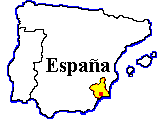 |
 Camposol - Mazarron Costa Calida |
 |
| |
 |
 |
 |
 |
 |
 |
 |
 |
| Your luxury spanish golf property on the Costa Calida, Mediterranean sea. Villa : 31 rooms, 4 levels, 2 residences. |